Henosis
Tackling Youth Mental Health Stigma
Project type:
Personal project
Role:
User research, UX Design, Prototyping
Duration:
4 weeks
The Problem
Youths are facing more challenges than ever before
In July 2021, a 16-year-old student was charged with the murder of a fellow 13-year-old schoolmate on campus. Following this tragic incident, the mental health of adolescents here quickly became a focus of public interest. With a little bit of digging however, one can see that this issue has been a matter of growing concern in recent times.
According to the World Health Organisation (WHO), 1 in 7 adolescent aged 10 to 19 year old experiences a mental disorder, yet this issue remains mostly unrecognized and untreated. In the context of Singapore, from 2015 to 2020, the number of youths seen at the Institute of Mental Health (IMH) for depression rose by about 60 per cent.
Why is this an issue worth addressing?
If left unaddressed, adolescent mental health conditions can stretch into adulthood, leading to adverse health, academic and social outcomes that impairs their ability to lead fulfilling lives as adults.
When considering these statistics and the potential repercussions, what can we as a society do to make things better?
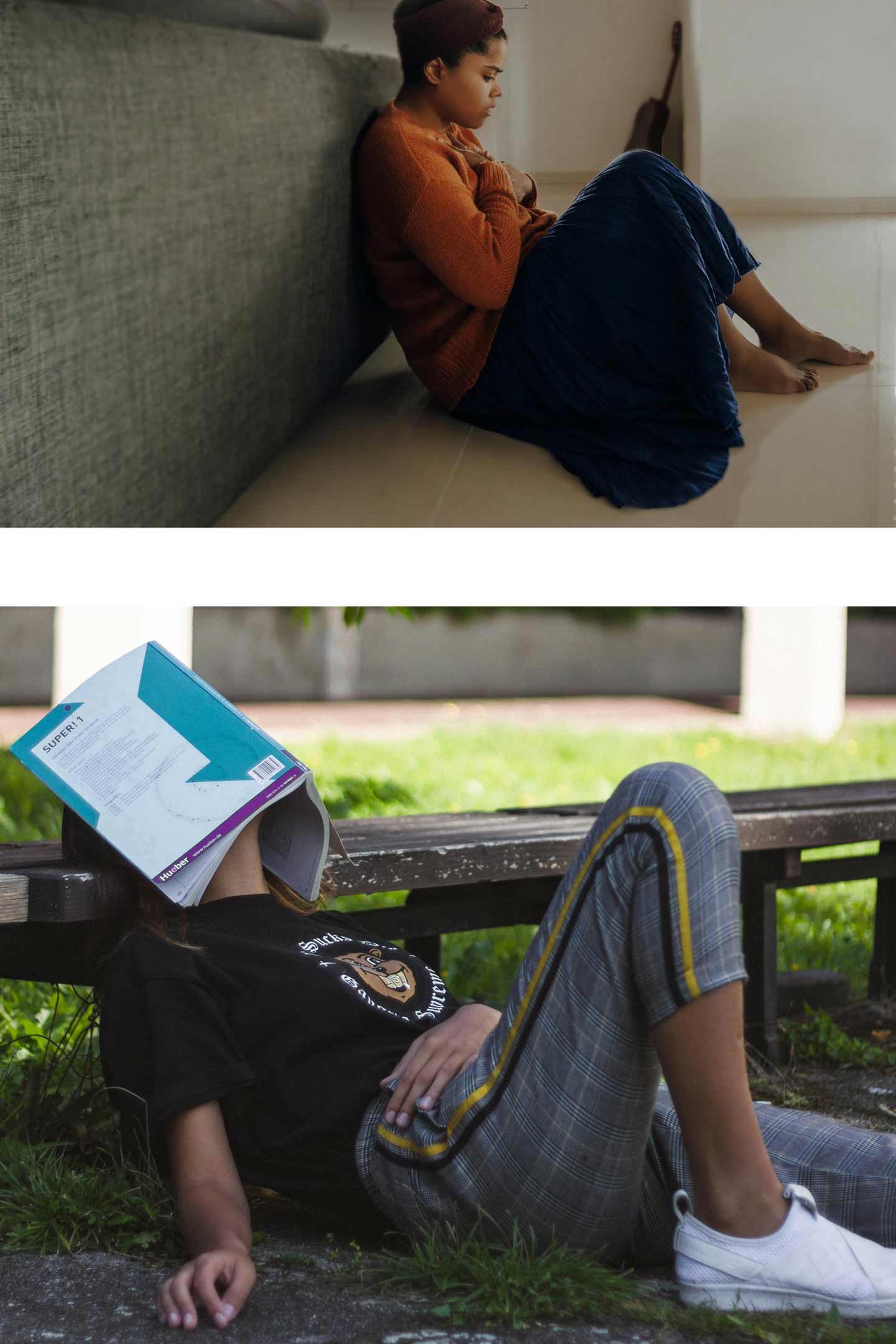
How has Singapore responded to this increase in adolescent mental health problems?
Current mental health initiatives that specifically target the youths in the context of Singapore can be broadly categorised into the following themes:

Enhancing mental health awareness across the whole school community
All schools currently have at least one school-counsellor, along with public education programs that help promote mental health literacy.
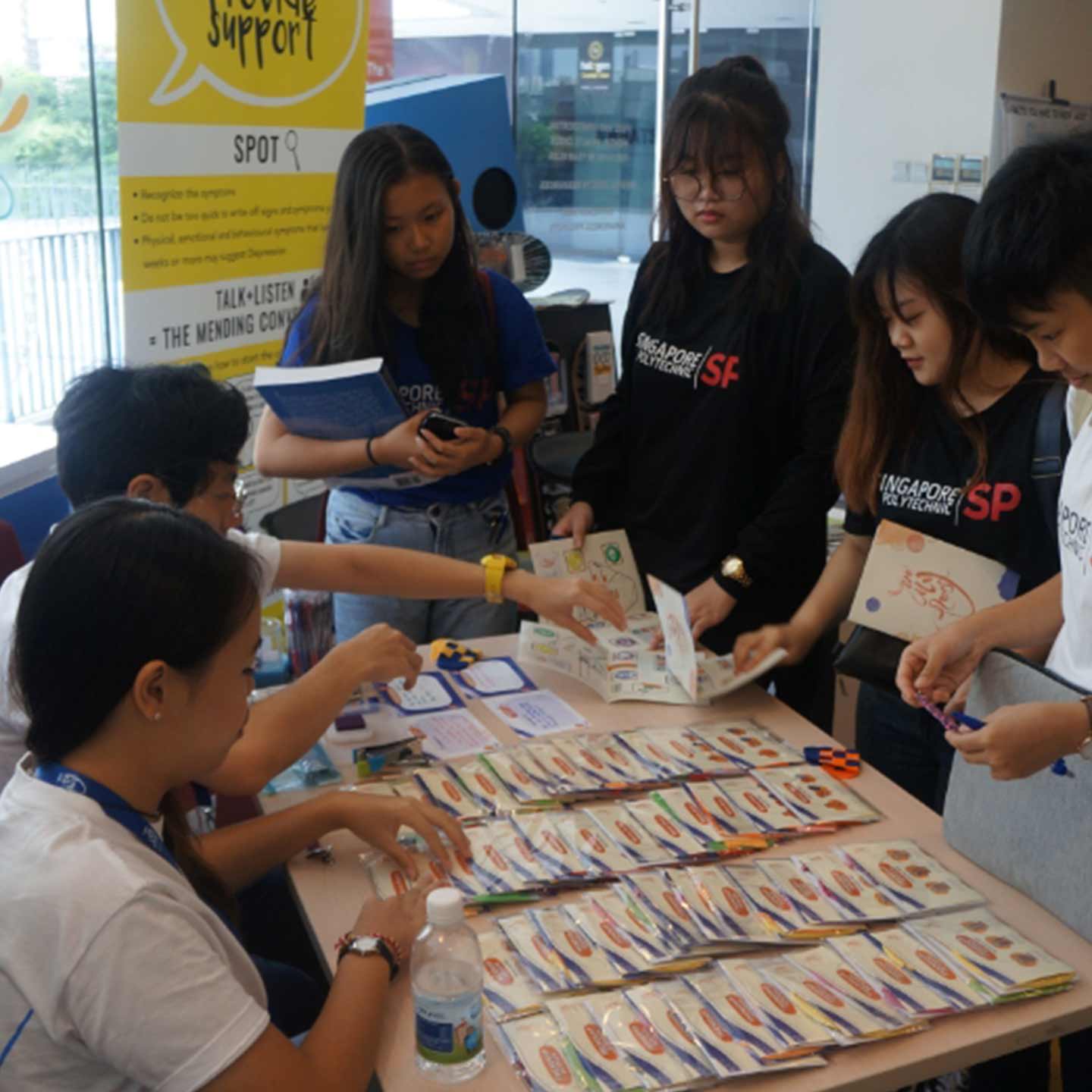
Reducing stigma through community mental health outreach
Voluntary welfare organizations have been active in addressing stigma via public education and community awareness programs.
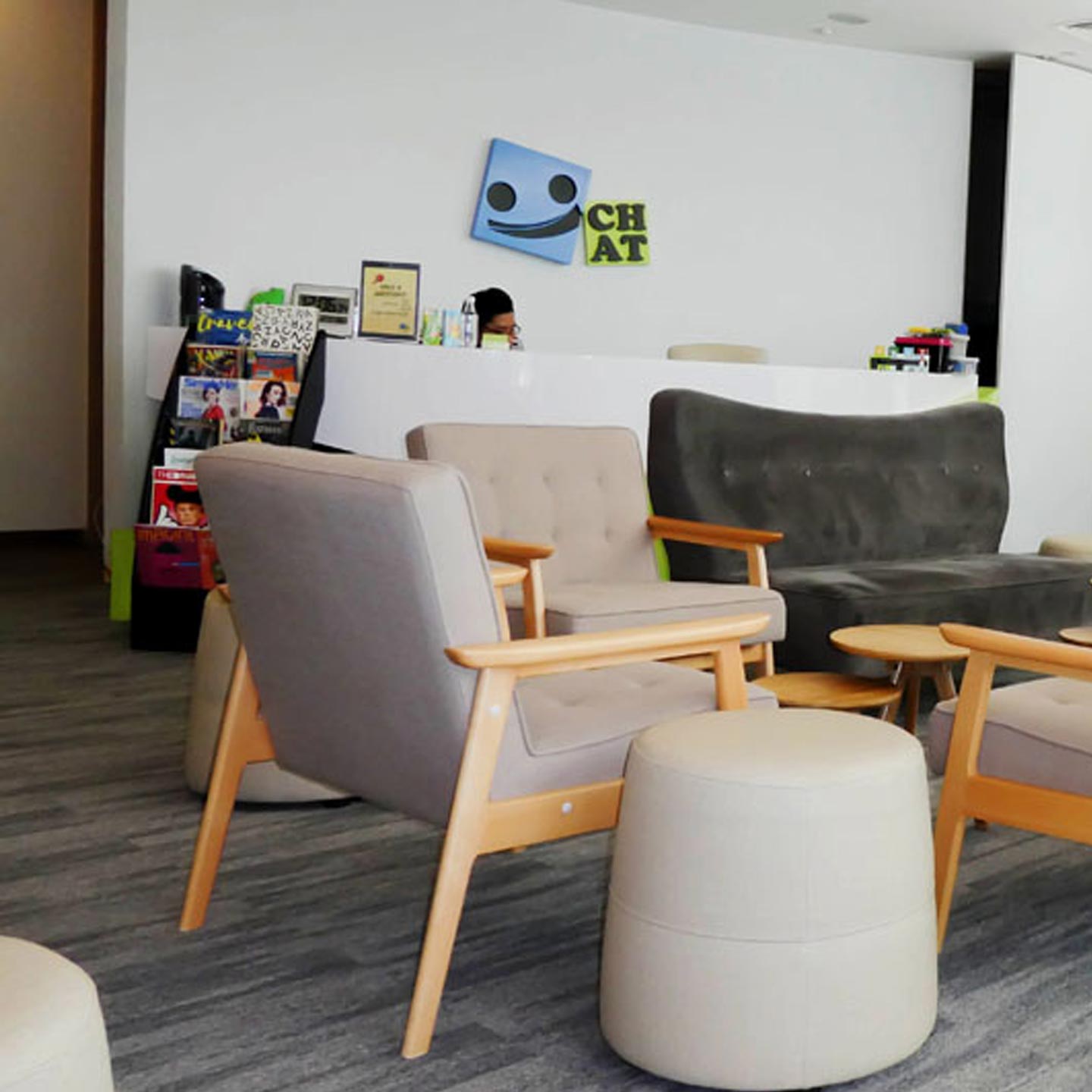
Ensuring easy access to subsidised treatments
Youths can seek free assessments and referrals for subsidised treatments at a designated national youth mental health resource centre.

Who are the stakeholders?
I followed up by asking some initial key questions and identifying the key stakeholders:
Business Goals
How will the business succeed in the market?
Users
Who is our target audience?
User Goals
What do the users want to accomplish?
Potential Features
How might we bridge the gap between our users and their goals?
But despite the many support that are available, many youths remain hesitant to seek help for their mental health, why?
To understand what youths face when it comes to mental health support, I surveyed 31 youths who were shortlisted with a screener survey.
From the survey results, it seems that although youths in Singapore do generally experience distress, many remain reluctant to approach others for help.
87%
access the internet for mental health-related informaton
70%
say they are not in good mental health
54%
are hesitant about seeking help from parents and counsellors
61%
tend to keep feelings to themselves
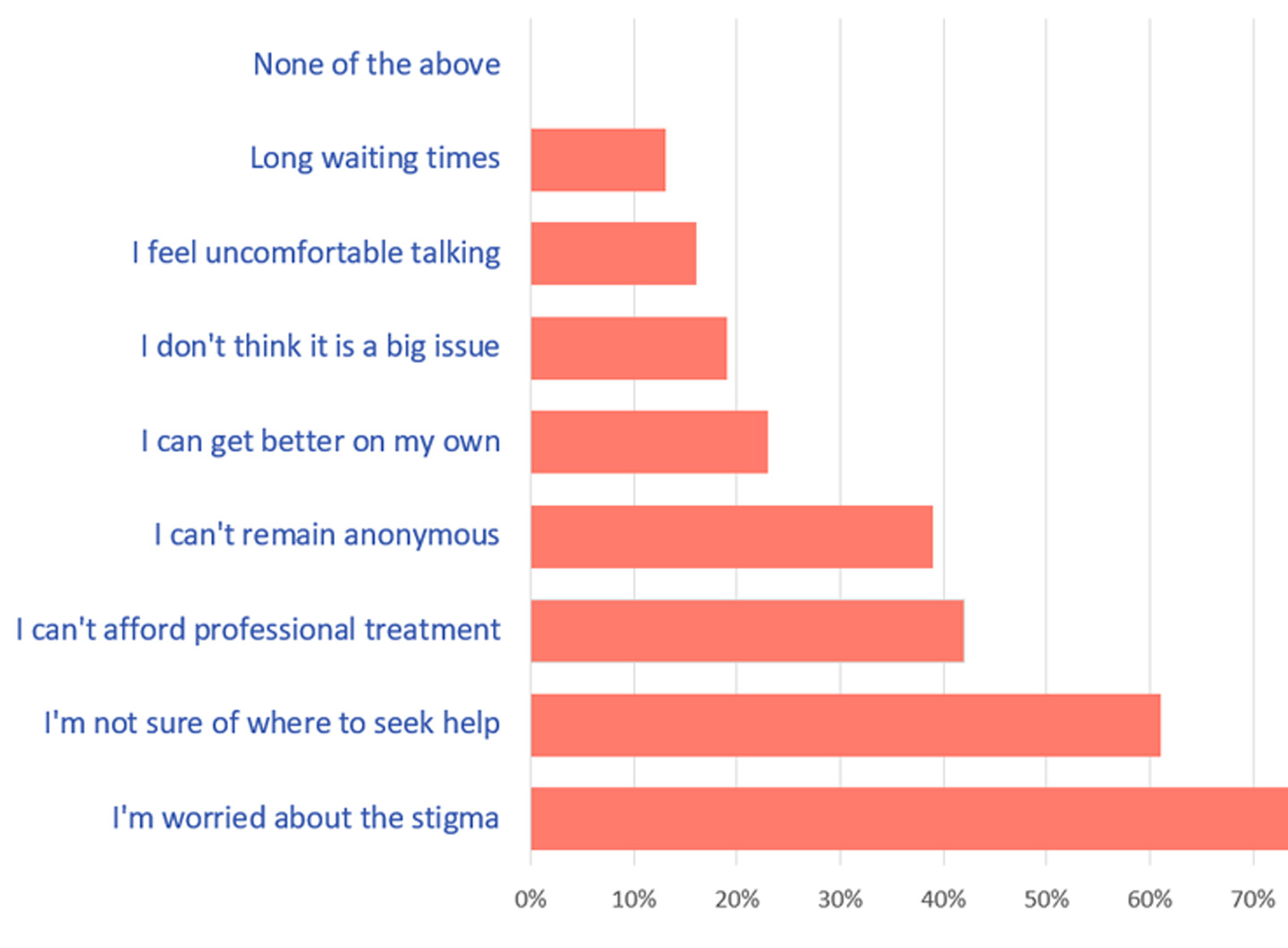
Deterrents to seeking out mental health support
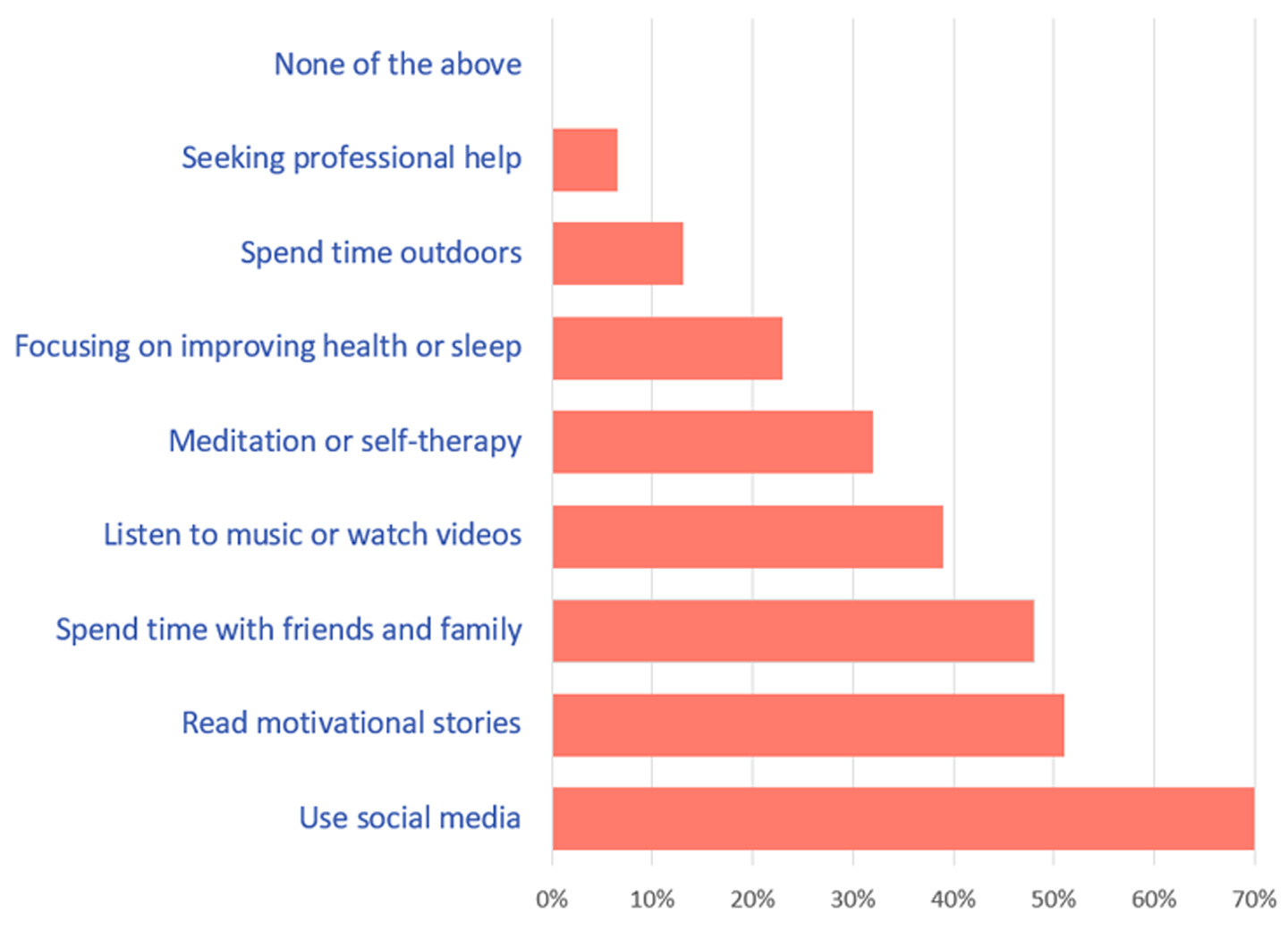
Ways to cope with mental distress
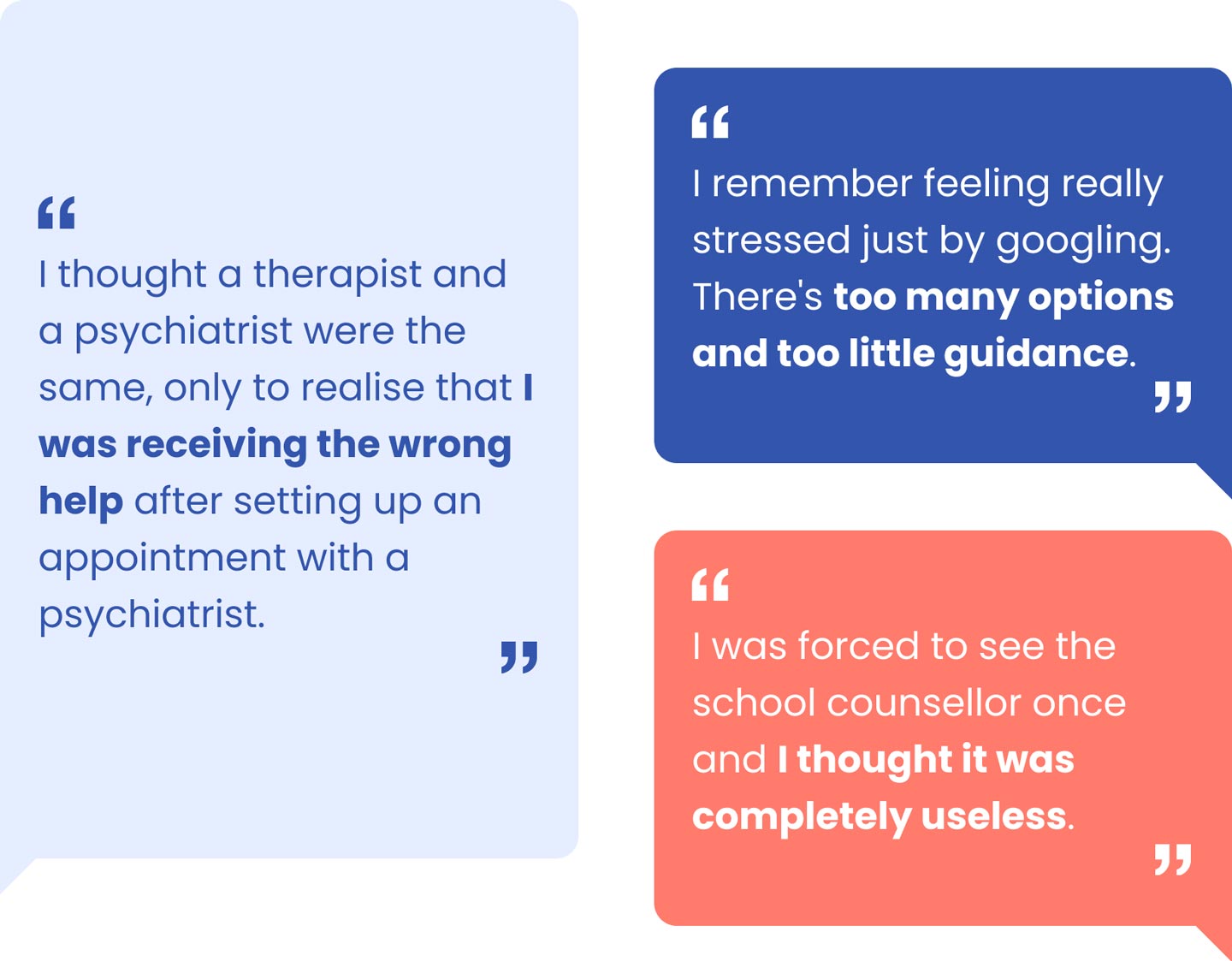
And youths continue to face more obstacles even when they are willing to seek help for their mental health problems
To understand what obstacles youths face when seeking mental health support, I conducted interviews with 6 individuals who were seeing or had seen a service provider if they would talk to me about their experiences.
Some of the more common struggles they faced when accessing mental health support include the overwhelming availability of resources, tendency to perform inaccurate self-diagnosis, and an inability to build trust with service providers.
Mental health apps are plentiful, but few are clinically validated
Many mental health support apps that are currently available in the market have features that are not scientifically validated. Users may view them as alternatives to clinical supports and this can be detrimental to their mental health in the long run.
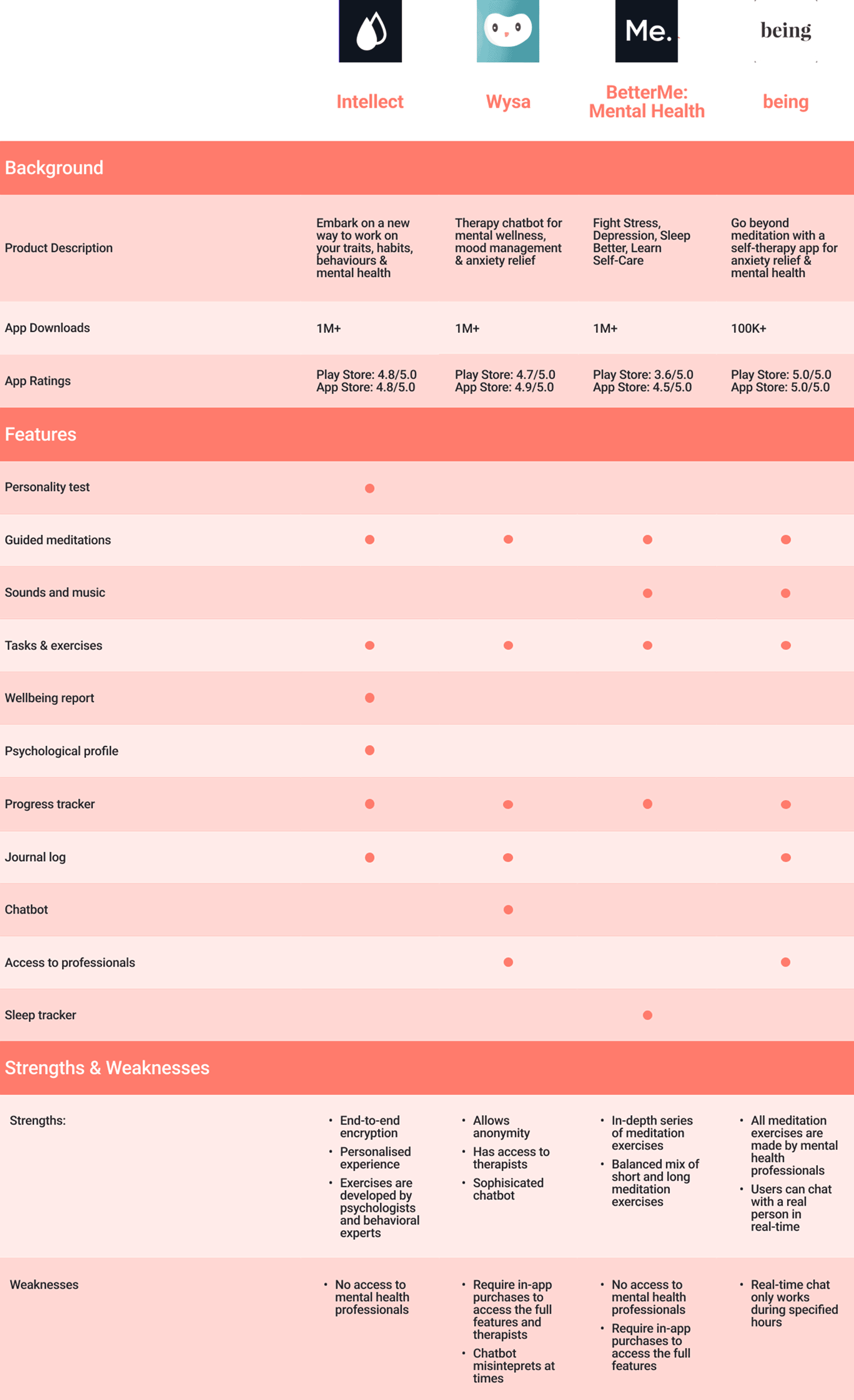
-
Limitation #1
Automated responses lack empathyChatbot responses were mostly scripted and felt impersonal. And users' inputs can be sometimes misinterpretated.
-
Limitation #2
Lack access to professional helpApps that focus on relaxation and meditation exercises tend to not have features in the form of social support, customer service and emergency support.
-
Limitation #3
Need to pay for professional servicesFor apps with online counselling services, users can only interact with a therapist when they pay for a subscription plan.
So who are we designing for, and what are their needs?
To summarise thus far, youths may not know where to seek help from and as a result, some may even try to self-diagnose their condition which may result in them seeking the wrong kind of help.
There is also reluctance to seek help over fear of being stigmatised by peers and the high cost of treatment. With that, I arrived at the following problem statements:
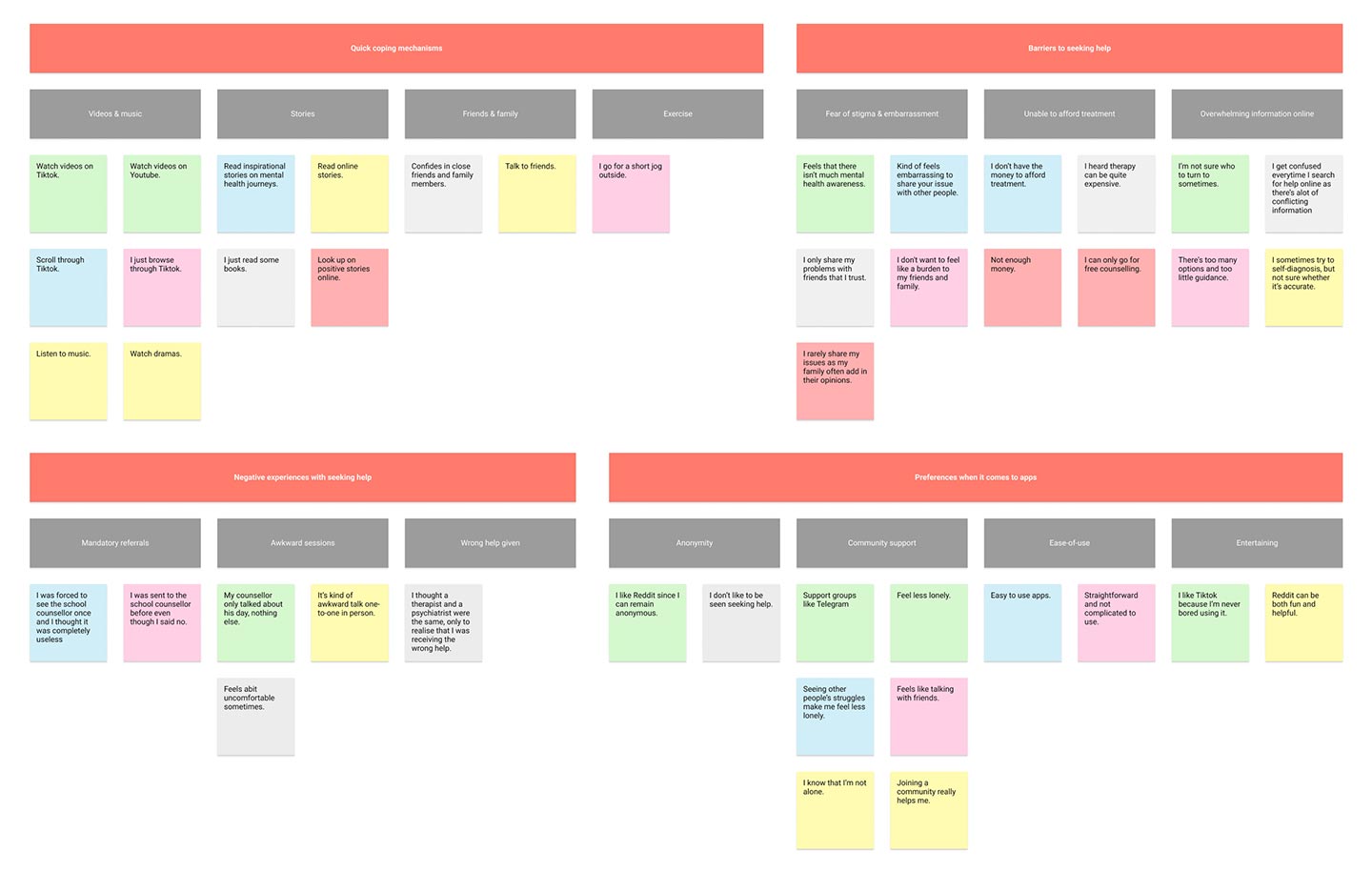
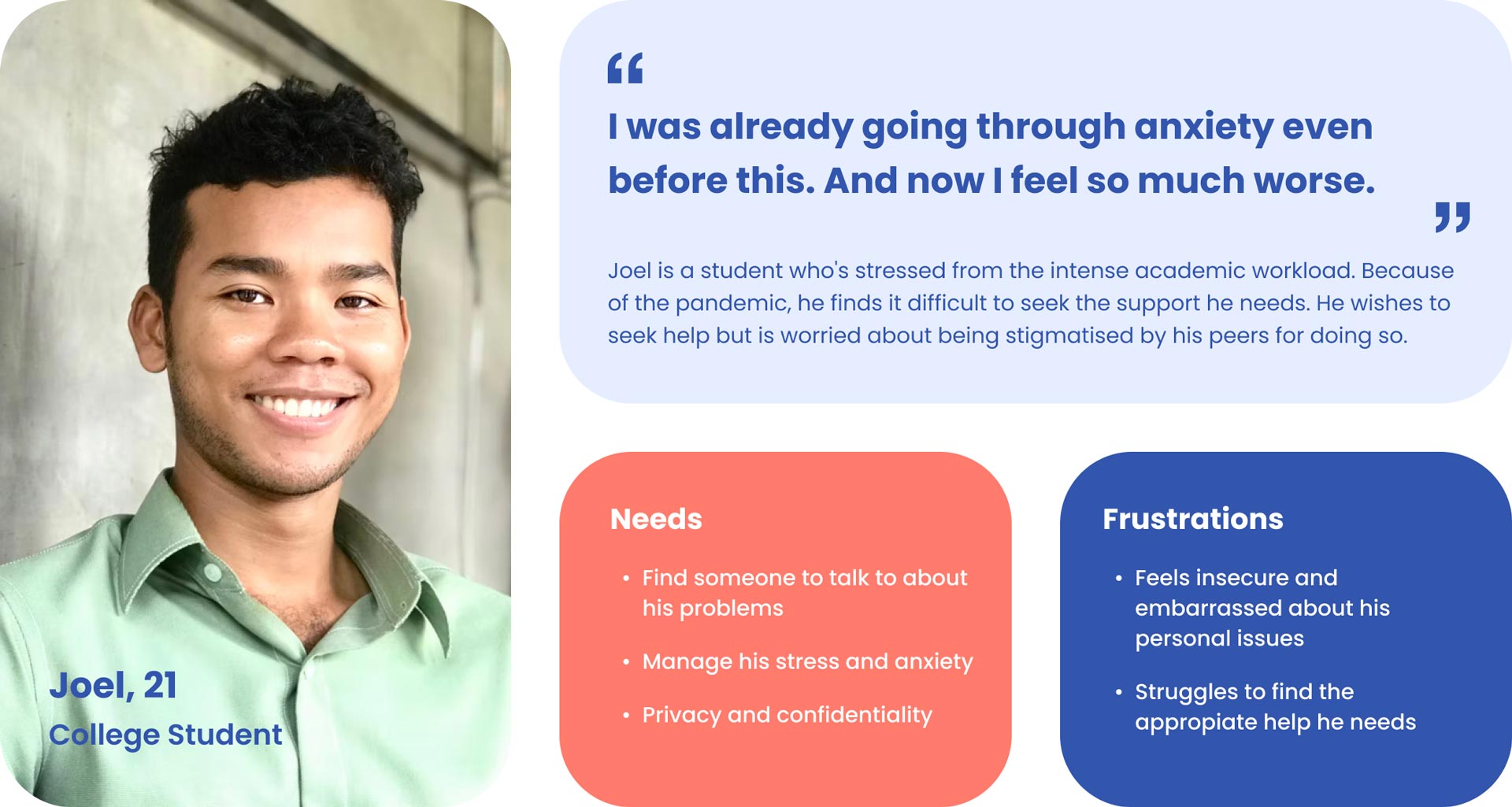

How might we encourage youths like Joel to come forward and seek reliable mental health support without the fear of being stigmatised?
How can we provide a safe and relatable platform for youths to connect and inspire others to seek help?
The solution should promise youths anonymity and encourage them to seek help on their own terms
Based on my research thus far, I needed to be mindful about involving their parents and any other caretakers in my proposed interventions. Given the fear of being sitgmatised, youths may prefer to be self-reliant when it comes to managing their mental health.
However, the solution needs to guide youths directly to the correct help and discourage self-diagnosis.
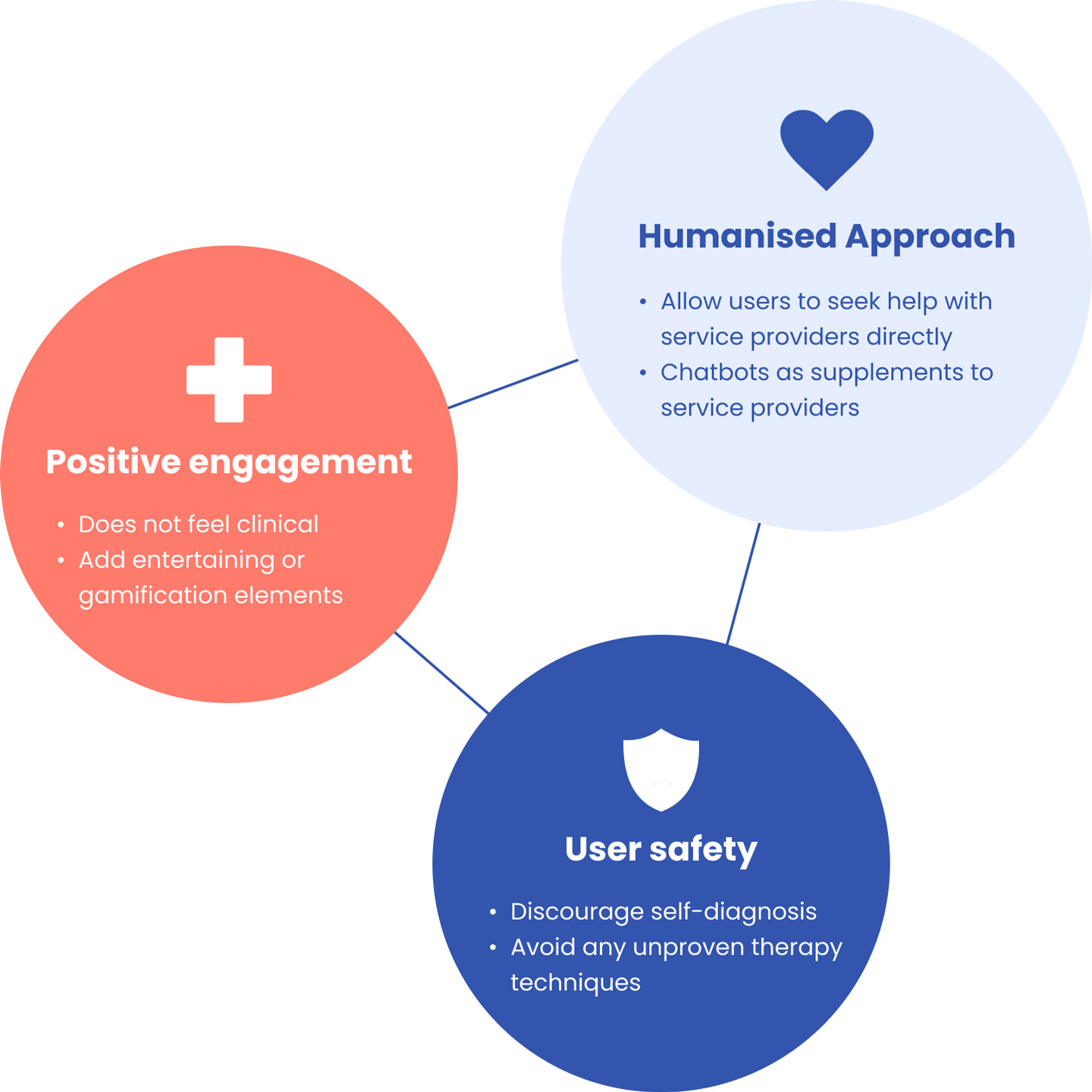

Peer support and technology as important pillars of youth mental health
While developing the persona's, the idea of peer support really stuck out to me. From the research, most youths preferred to seek advice from friends. This is no surprise as they may feel more comfortable opening up to those who are of similar age as them.
After some brainstorming, I decided that the app would need to have two core components as part of the overall solution:
- Story viewing and sharing with the community and,
- seeking help with service providers.

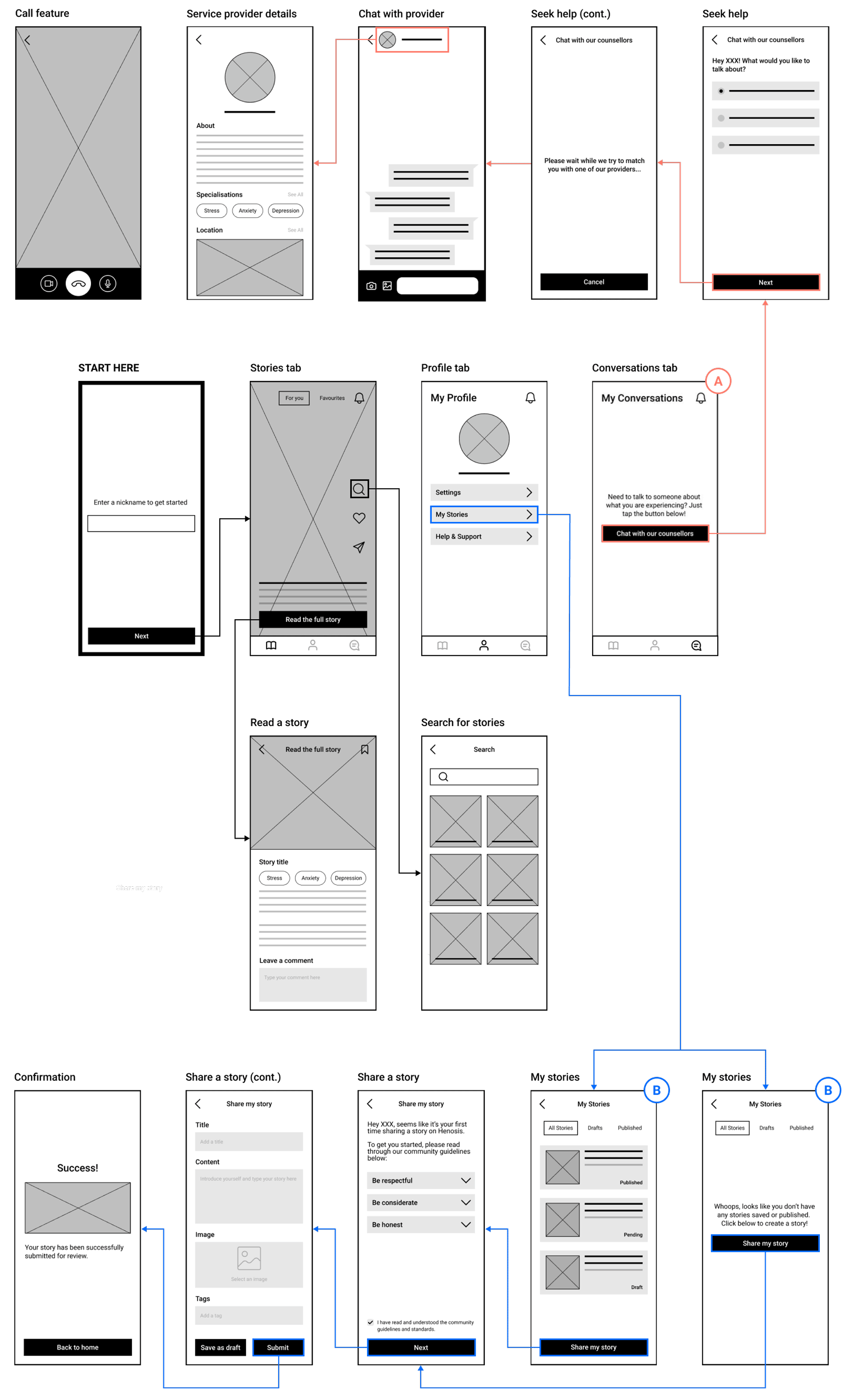
Idea is a hit with users, but needs some more fine tuning
I followed up with Guerrilla usability testing with 5 participants on the low-fi prototype and received some constructive feedback regarding the flow and concept.
"Maybe the app can sound more positive to encourage youths to take action."
"I'm not sure about writing stories, is there like a guideline to refer to?"
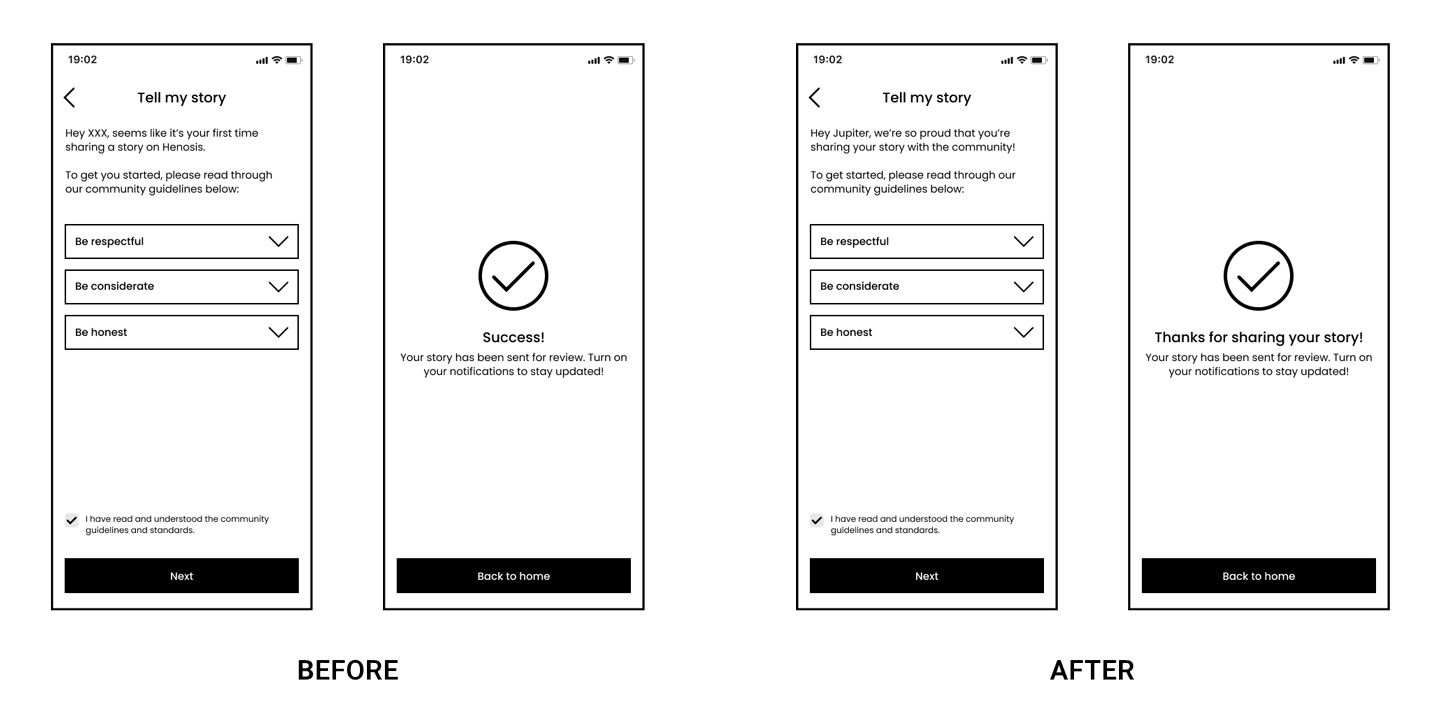
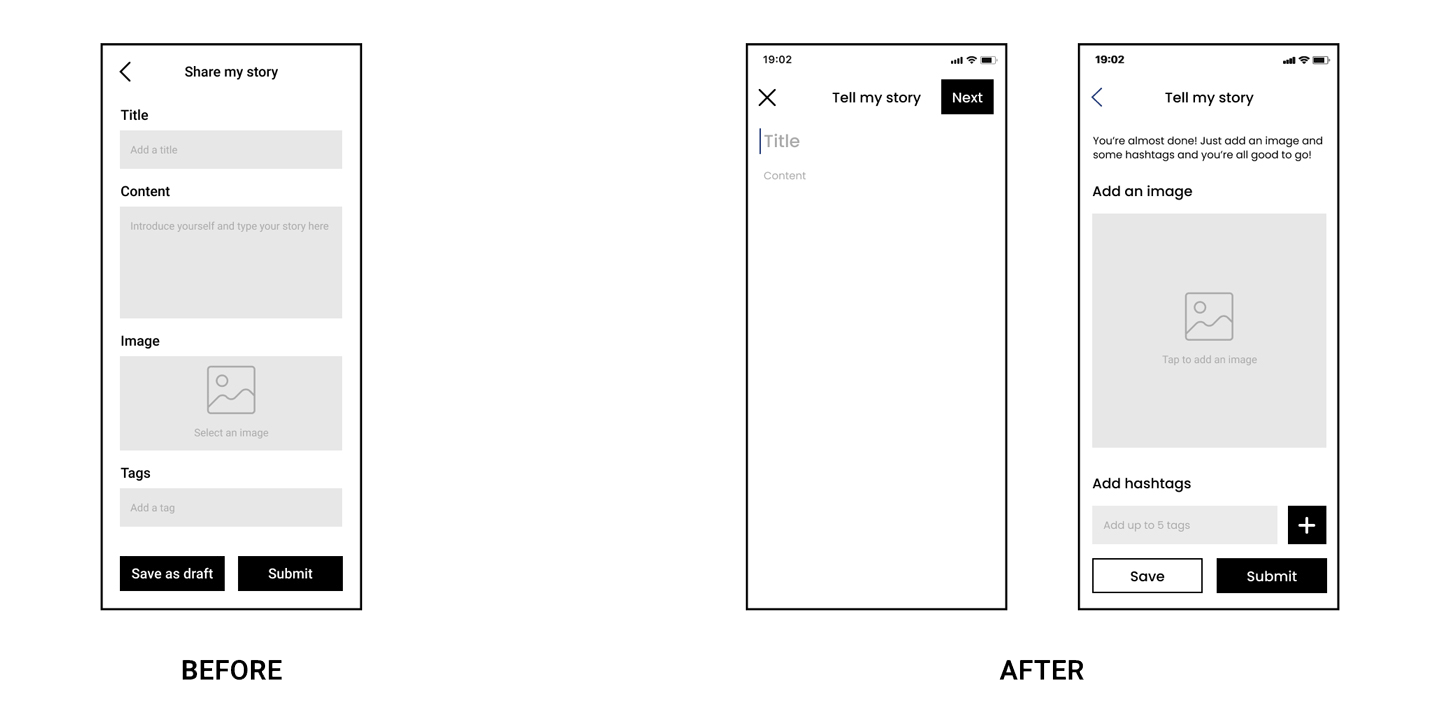
UI design style guide and design system
Moving onto the brand identity, I created list of words and compiled a moodboard that best described the emotions I wanted the brand to convey (serenity and positivity). This helped to guide my decisions regarding the colour theme and the design of the logo and other UI elements later on.

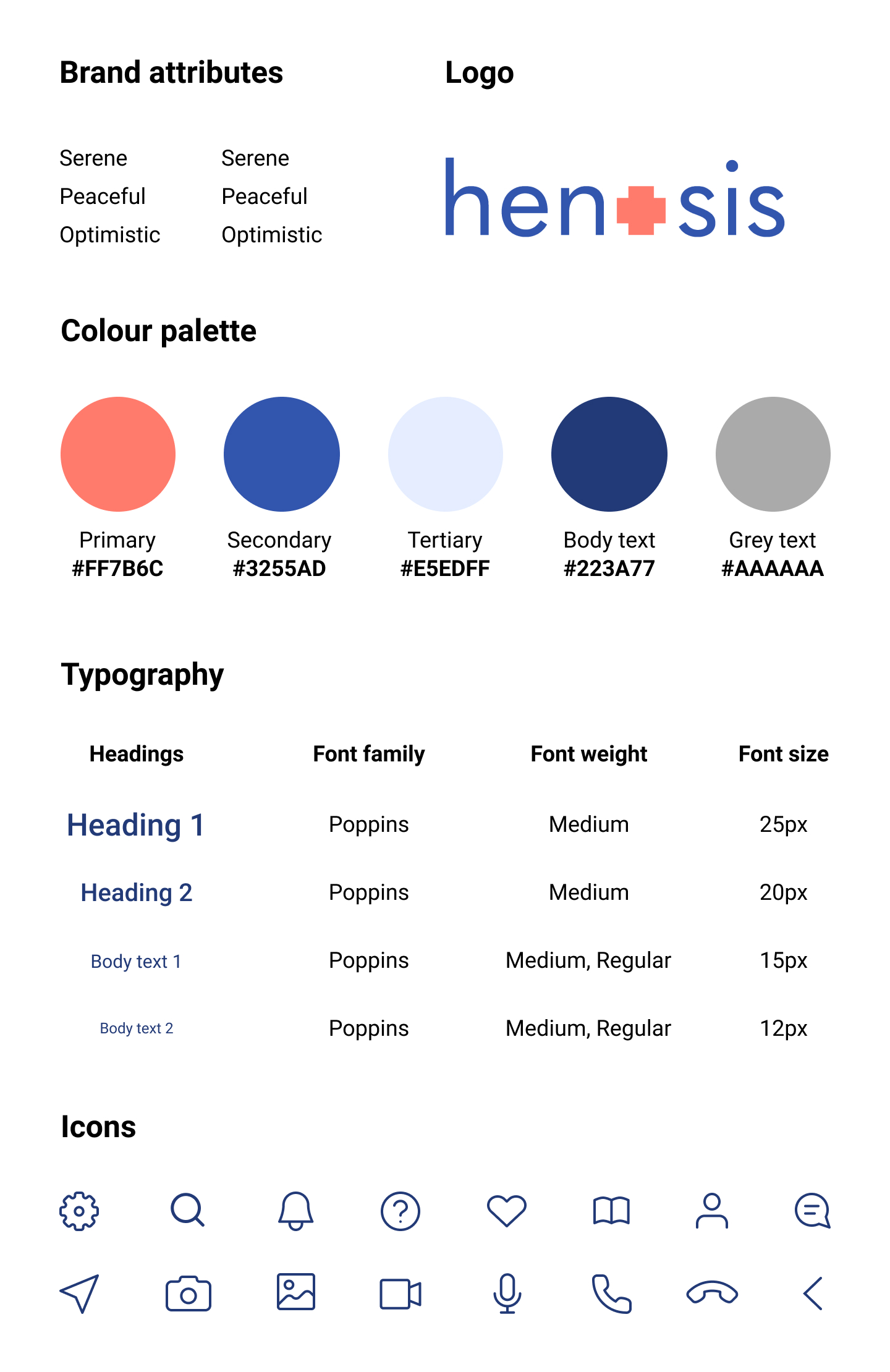
Poppins is used as the main font given its legibility as a geometric sans-serif typeface. The rounded edges carries a simple and seamless consistency that appears friendly and inviting.
For colours, blue helps to make people feel calm, reassured and relaxed, which can help ease any negative emotions. I used orange to contrast against the blue hues and accentuate the themes of self- esteem, optimism and inner strength in seeking mental health help.
To ensure optimal accessibility, I ensured that the colours passed WCAG 2.0 AAA contrast standards.
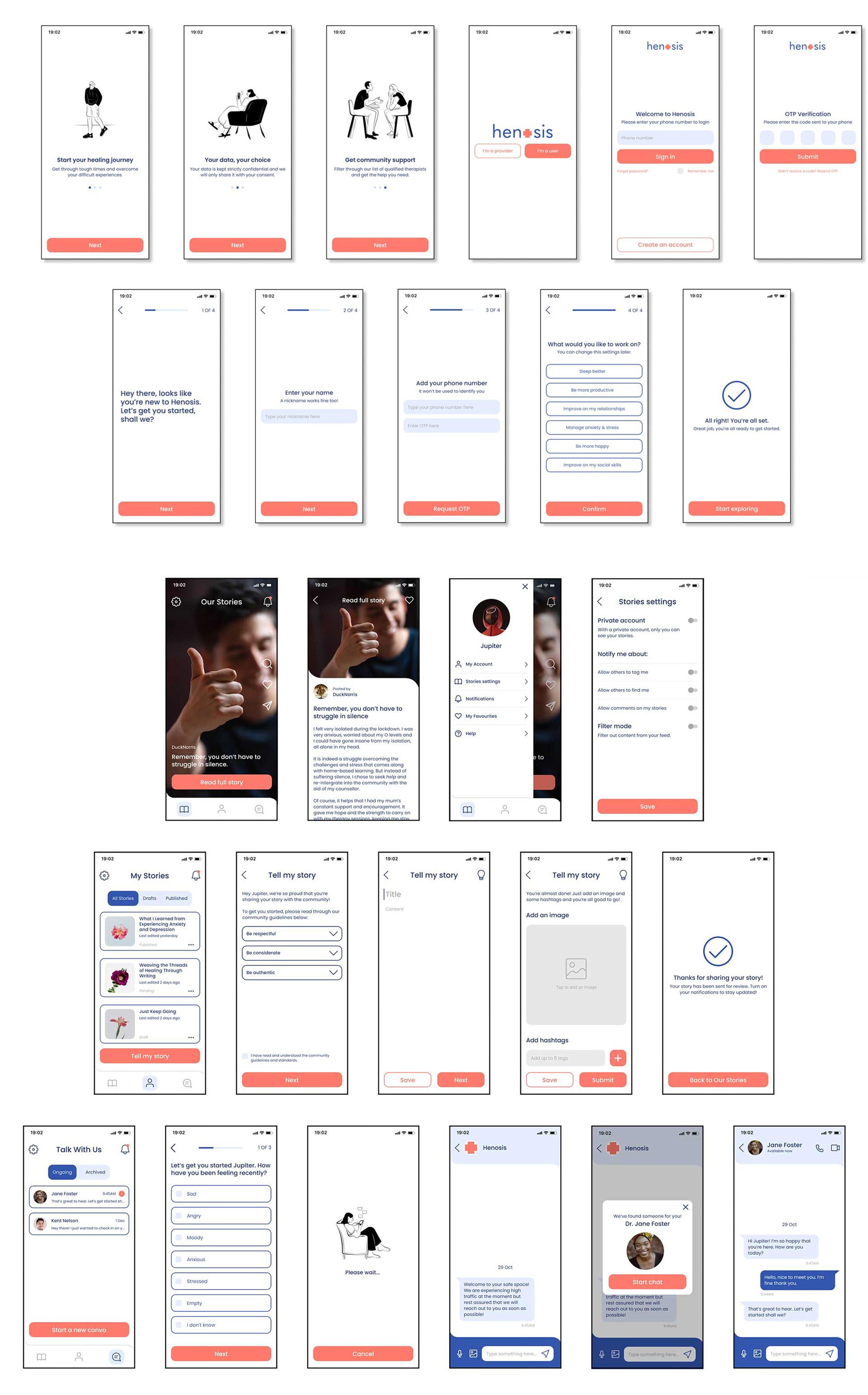
I then conducted the usability testing with 5 participants over Zoom, giving them a list of tasks to complete on the mid-fi prototype.
After completing the assigned tasks, participants are given a questionaire to rate their overall experience with the app. The results are summarised below:
Usability test overview
Task Completion Rate
87%
Average usability score
6.1/7
The Solution
Read and share stories with the community and empower others to seek help
Henosis is a hybrid social media/mental health app where youths can share their stories and seek support in a safe and anonymous way. The safe and judgement-free community of shared experiences and mutual support helps to break down stigma and empower youths to seek support for their mental health and wellbeing, all while being safely monitored by licensed and registered mental health service providers.
Build your own safe space
Converse anonymously in a safe space with just a nickname. All data is kept encrypted and confidential.
Get the right kind of help
Try Henosis chat, an instant text based chat session that connects you to a network of service providers who are ready to offer support.
Break the cycle of stigma
Find experiences you can relate to. Showcase your voice and be inspired by others by sharing the up's, down's of your mental health journey with the community.
Reflections
Takeaways
Knowing which right tool to use for a situation is more important than going through a rigid checklist of steps in the design process. There are times when I blindly followed a design process, going through the motions of checking off boxes in a list without really understanding why I'm doing what I'm doing until I took a step back to look at the bigger picture. Design principles shouldn't be linear.
Next Steps
If I had more time, I would:
- Introduce a flow for service providers.
- Scale up product to a web application that service providers can use for their work.
- Validate the prototype with service providers.


